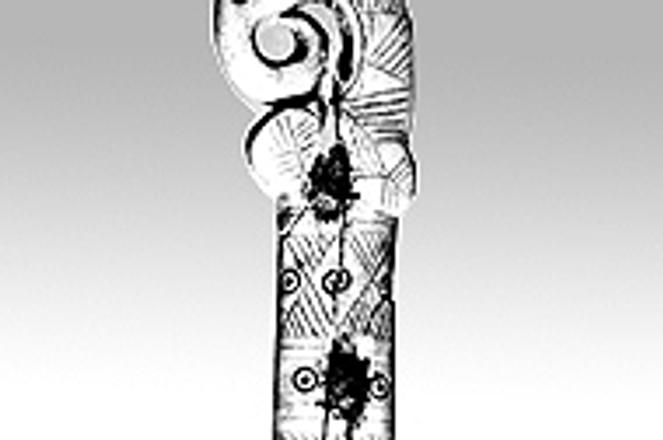IMPRESSIVE Iron Age artistry.photo: Courtesy of SNM
THE HALLSTATT knife is a 23-centimetre long iron blade with a richly decorated antler handgrip.
It is named after the early Iron Age period in which it was made and represents one of the most significant finds from the period on what is now the territory of Slovakia.
Scythians who came to the Carpathian region from the Black Sea steppes at the end of the 6th century probably made the elaborate knife.
The artefact was discovered in South-western Slovakia in the municipality of Veľký Grob. It is an extraordinary piece of craftsmanship.
The Hallstatt period is named after the eponymous locality in Upper Austria and lasted from the 8th to the 5th centuries BC. In the locality itself a burial ground full of rich artefacts has been excavated.
It was the burial place of the social elite and contained jewels, bronze and glass jars as well as other precious objects. These finds are proof of Hallstatt's wealth, which was based mainly on salt mining.
During the Hallstatt period iron began to be manufactured in Europe and gradually replaced bronze. Several exceptional items from this period were found in Slovakia, of which the Hallstatt knife is a prime example.
The antler handgrip is decorated with a motif of a bird of prey's head with bent beak. Around this motif triangular, diamond and circle patterns are engraved into the horn. It was undoubtedly a rare article even when it was made.
Some historians think the Scythians destroyed the local Hallstatt cultures, replacing them with their own Szentes-Vekerzug (5th to 4th century BC) culture.
The design of the Hallstatt knife supports this theory. The Kalenderberg culture that did inhabit what is now Southwestern Slovakia typically used geometrical decoration on jars and in the construction of burial mounds.
However, the design of the Hallstatt knife is typically Scythian. This is defined as zoomorphic, realistically portraying scenes of wild animals and hunting or sphinxes and other mythical animals.
The style was mainly used for decorating weapons and warriors' outfits. The knife from Veľký Grob was probably such a weapon.
The Hallstatt knife can be seen at Bratislava castle within the SNM's archaeological exhibition, Jewels of Distant Past, open Tuesday to Sunday from 9:00 to 17:00.
From February 7 the exposition will be closed for approximately two weeks due to the Bush-Putin summit.
Author: Rado Čambal

